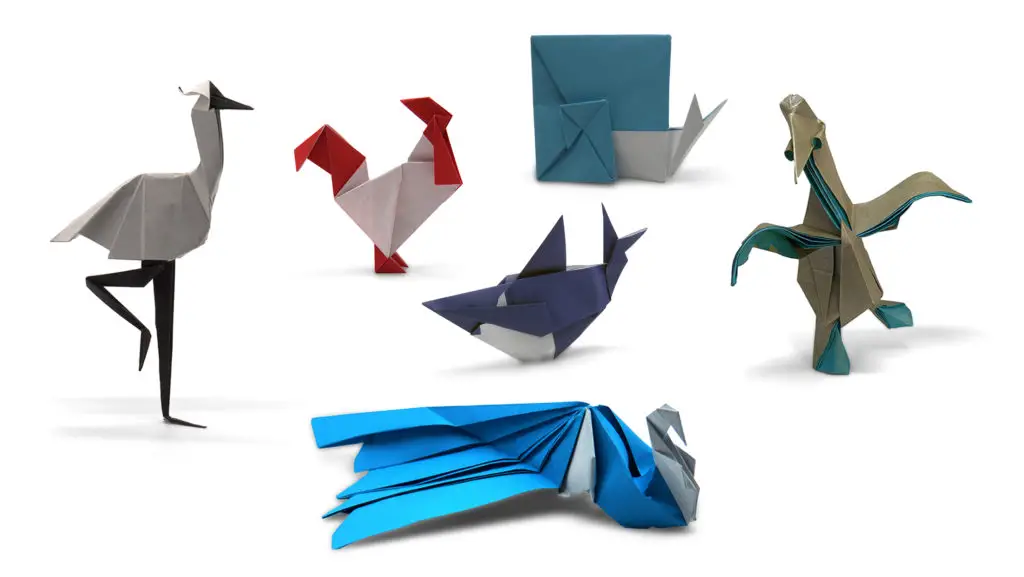
“In the marathon anything can happen.”
-Paula Radcliffe
So What’s an Origami Marathon then?
The first ever Origami World Marathon took place on 22nd and 23rd August 2020, organised by Nicolas Terry of Origami-shop.com, Ilan Garibi, and Guy Loel. The premise was simple: 48 original models, taught by the people that designed them, one an hour for 48 hours. A lot of origami conventions around the world have either been cancelled or switched to an online event this year, but this was taking things up a level.
When I saw it advertised all over social media, I knew I was going to have to get involved! The price was €48.00 and included videos for all the models. Folding for 48 hours? I’ve never thought of origami as an endurance sport before, but I thought it was an interesting concept and I was looking forward to it.
Something for everybody
The schedule of classes came through shortly after booking. There was a wide range of classes available, with a good mix of representative models, modulars, geometric designs & stars, and tessellations. The models also varied in complexity as well, so there would be something for everyone. This was good to see. The schedule even came with some links to a few YouTube videos, so people could judge their folding ability and choose appropriate classes.
A few of the more complex models were allocated two hours, and some had precreasing needed in advance. This marathon came with homework! Every model had a recommended paper size and type. Usually it was standard origami paper of one size or another to keep it accessible, but it was useful as it meant I could prepare some papers in advance for models like the Blue Footed Bird, or the White Tailed Deer.
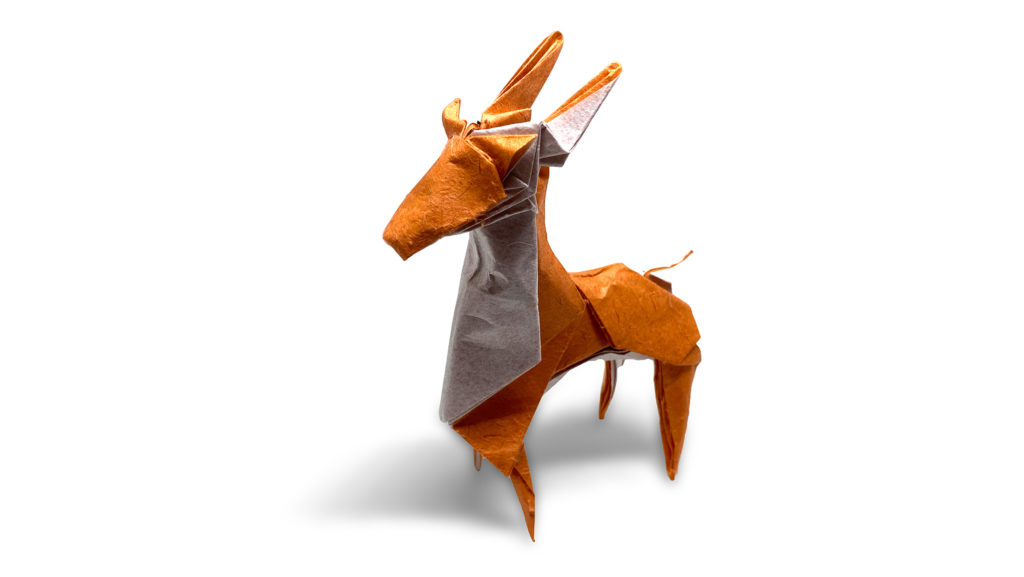
Getting stuck in
The sessions started at 00:00 GMT on Friday night, but I decided to wait until Saturday morning before beginning my origami marathon. I knew it was going to be a bit of an odd one as I’d got something on both Saturday and Sunday that weekend. Folding was going to have to be fitted in around this.
One of the things I had been glad to find out from the materials sent out in advance was that there would be a video made available to all attendees, showing how to fold the model for those who couldn’t make the live session. That meant I would still get to fold the models from the classes on Friday night, even though I chose to get a good night’s sleep, rather than folding all night.
The folding sessions were really well organised. The event was run over two zoom ‘rooms’, with sessions taking place in each one alternately. This meant there was time for the models that needed two hours without holding up the hourly schedule, and the organisers had the capacity to sort out technical hitches before each class started.
Each session had a moderator as well as the person teaching. They could keep an eye on the clock, read the comments and ask the instructor to repeat a step if someone posted that they needed to see it again. That gave everyone the best possible chance of finishing the model, and getting it done in time. There was a small team of moderators running the marathon – this wasn’t something one person could do on their own for the whole weekend.
My first session was a Blue Footed Bird, designed by Kunsulu Jilkishiyeva, from Turkey. It’s actually got a more specific name than that, but if I put it here the Google Gods will assume it’s an adult content article, so I’ll not do that! Let’s just stick with ‘bird’. If you want to know the proper name for it, you can look it up later. I had prepared some paper specifically for this model. It’s not a particularly difficult model to fold, but I found myself struggling to keep up! Thankfully I wasn’t the only one and the moderator asked for the pace to slow down a bit. I was pleased with the result. It’s a very quirky design.
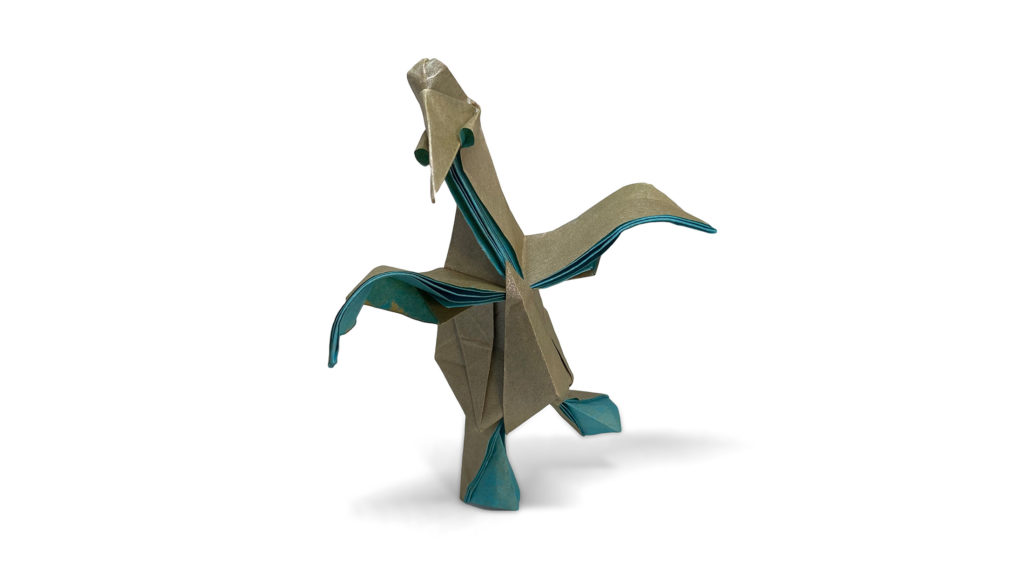
If I was struggling to keep up with the pace on that model, the next one I had to fold really fast! I was late into Juho Könkkölä’s Knight class and hadn’t got my paper ready. Although I could see what the first few steps had been, once I’d grabbed some paper I had to fold these steps from memory while paying attention to what was still being shown on screen. It didn’t take me long to catch up though, so clearly I’m not that slow a folder! Usually when you rush things you end up with bad results, but I’m actually happy with how this one came out.
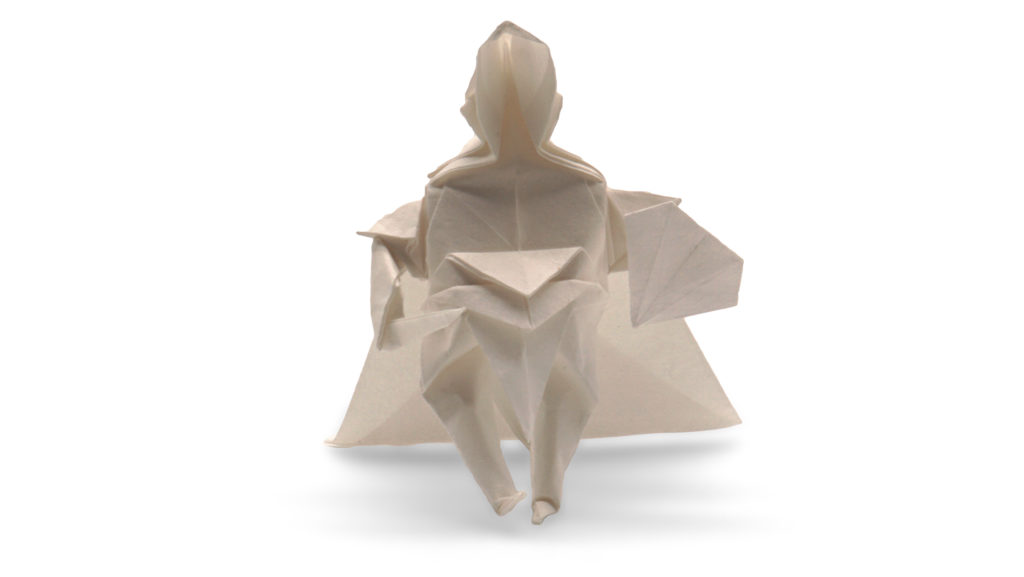
I went to a load of different sessions but I won’t go over them all. Of all the models I folded across the weekend, I think my favourite is the Heron. This was designed and taught by Aleksander Timoshik, who won the International Origami Internet Olympiad in 2018. This isn’t the most complex model I folded during the marathon by any means, but it’s certainly one of the most efficient and elegant designs I’ve folded for a while – not just this weekend. Just beautiful.
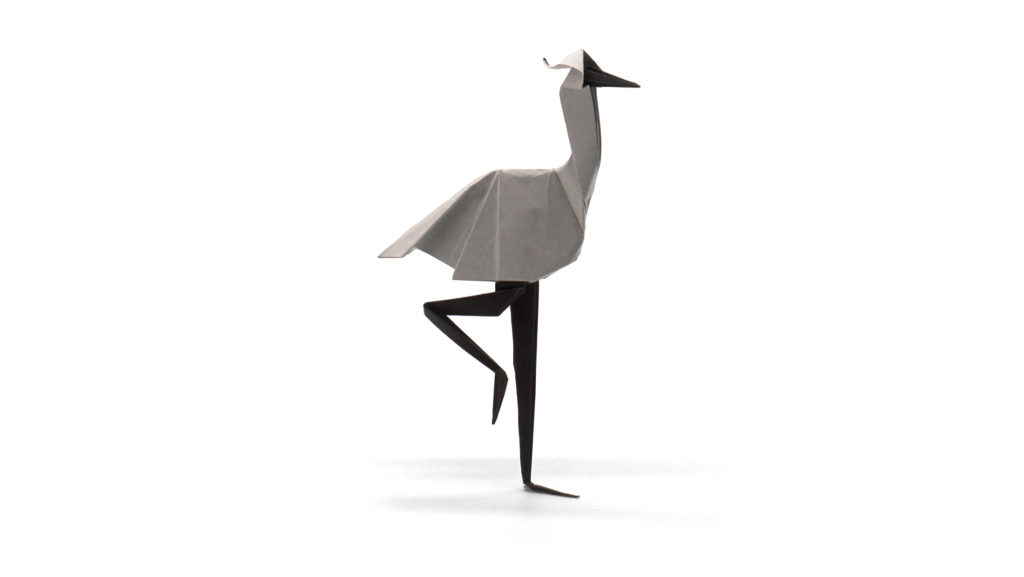
As well as folding all the models, one of the things that is good about an event like this is that you get to put faces to the names of origami designers – some of whom you’ve heard of, some you haven’t.
Michael LaFosse taught one of his famous origami butterflies.
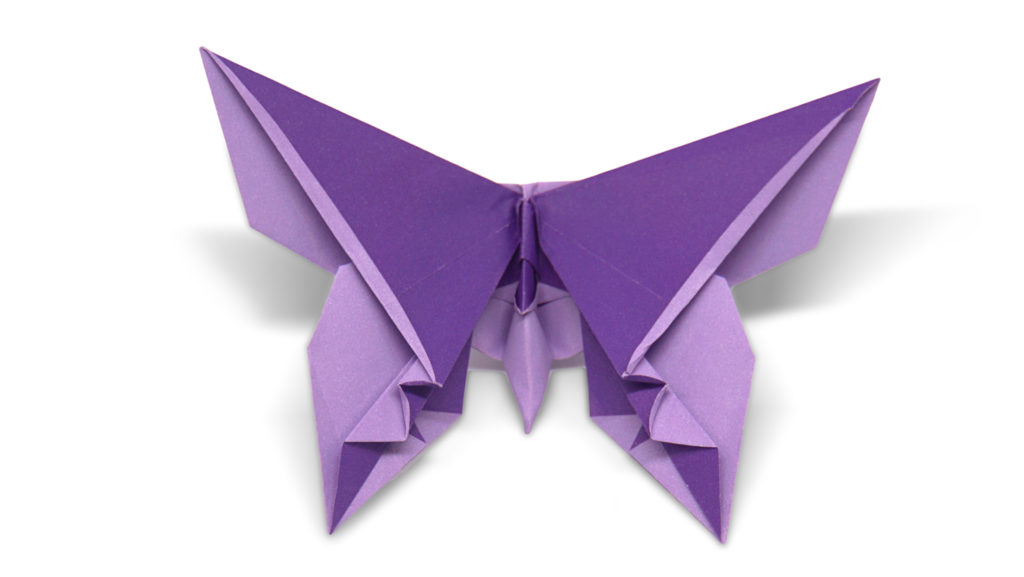
Roman Diaz shared a fun pyramid Santa model. (If you liken this model, you might also enjoy this origami Santa)
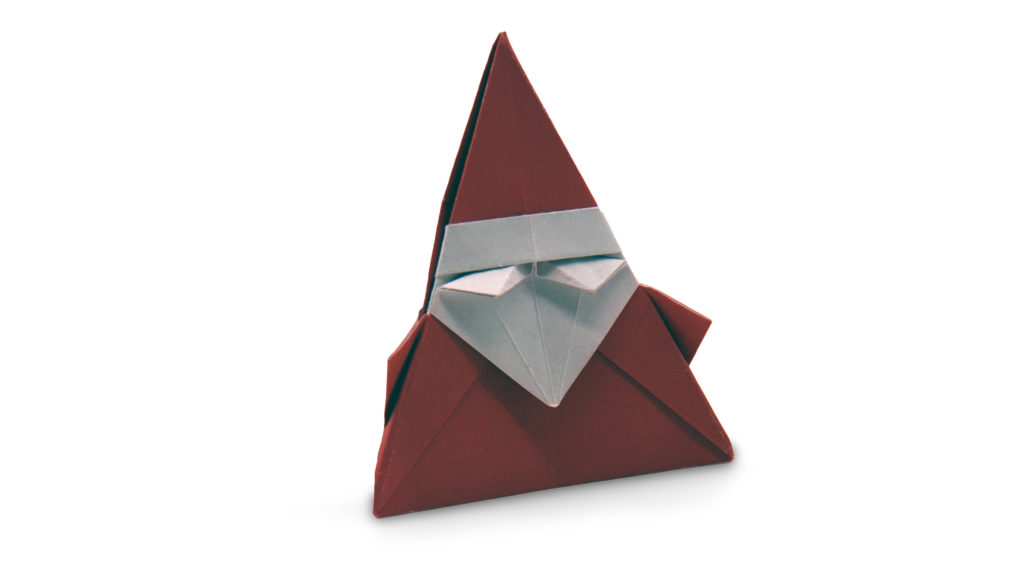 Kade Chan, from Hong Kong, explained how to make his origami grey whale.
Kade Chan, from Hong Kong, explained how to make his origami grey whale.
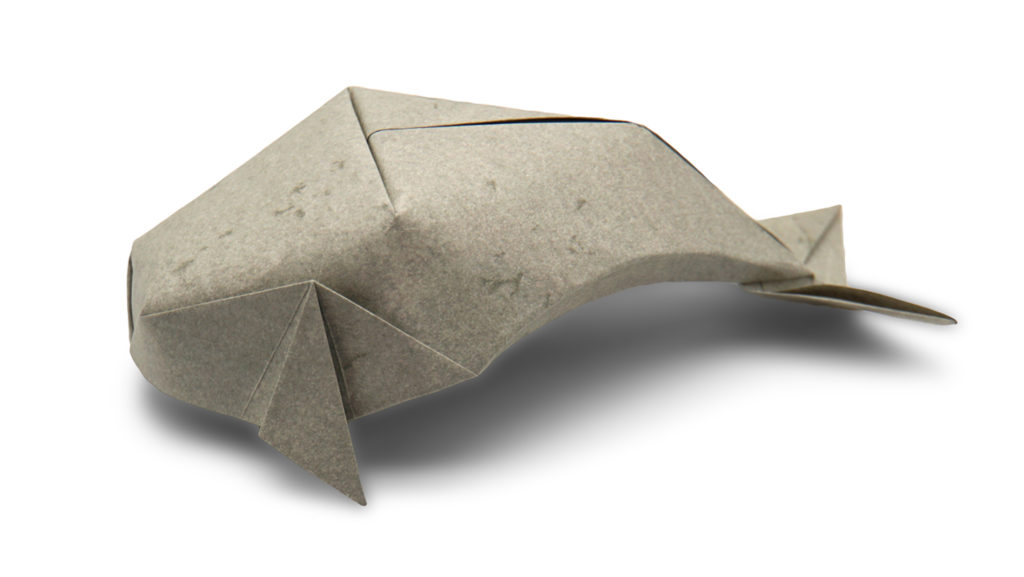
Spain’s Oriol Esteve taught how to fold his origami shark.
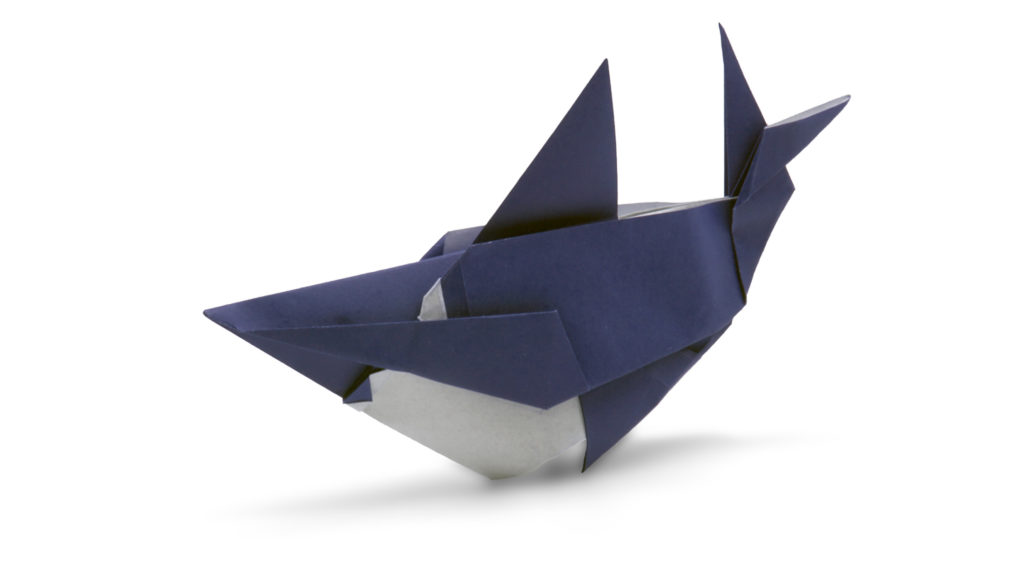
Jonathan Rèbouillat (France) showed us how to wet fold his sleeping cat. (If you like this model, also check out this origami cat)
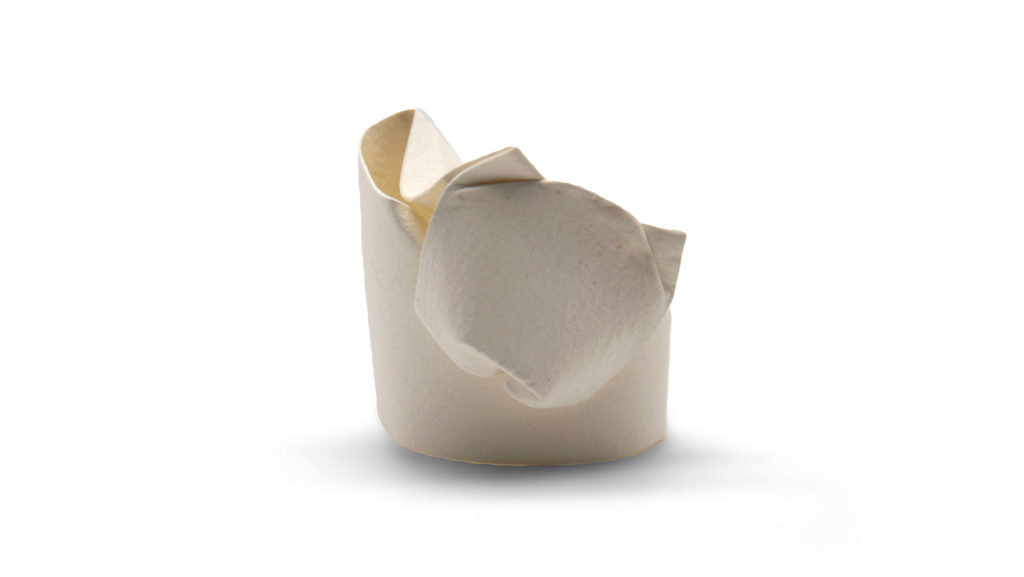
From India, Himanshu Agrawal gave a lesson on his seated peacock model. (If you like this model, also check out these origami peacocks.)
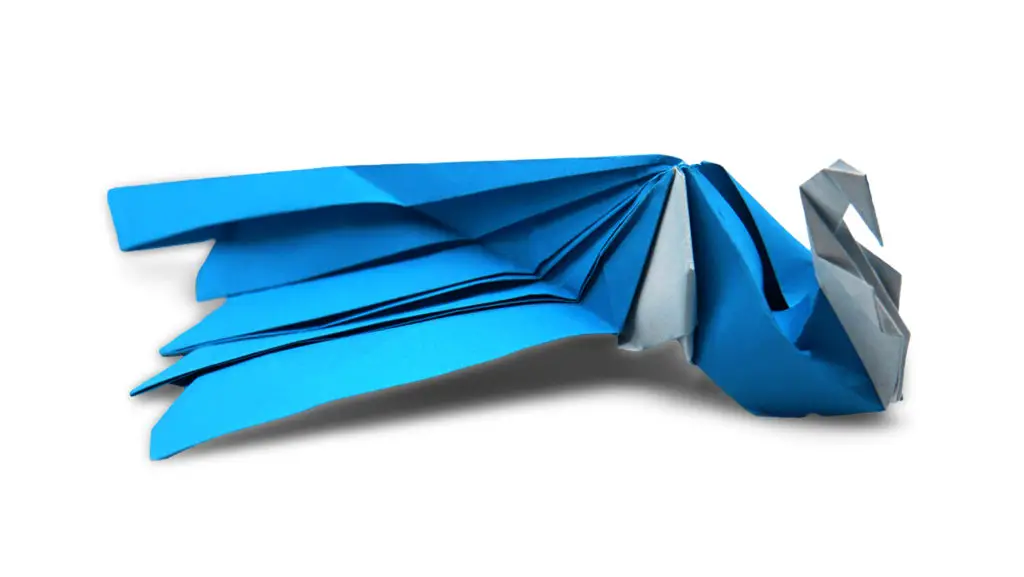
Fumiaki Kawahata, from Japan, showed how to fold his Fennec fox model. (If you like this model, also check out this origami vixen.)
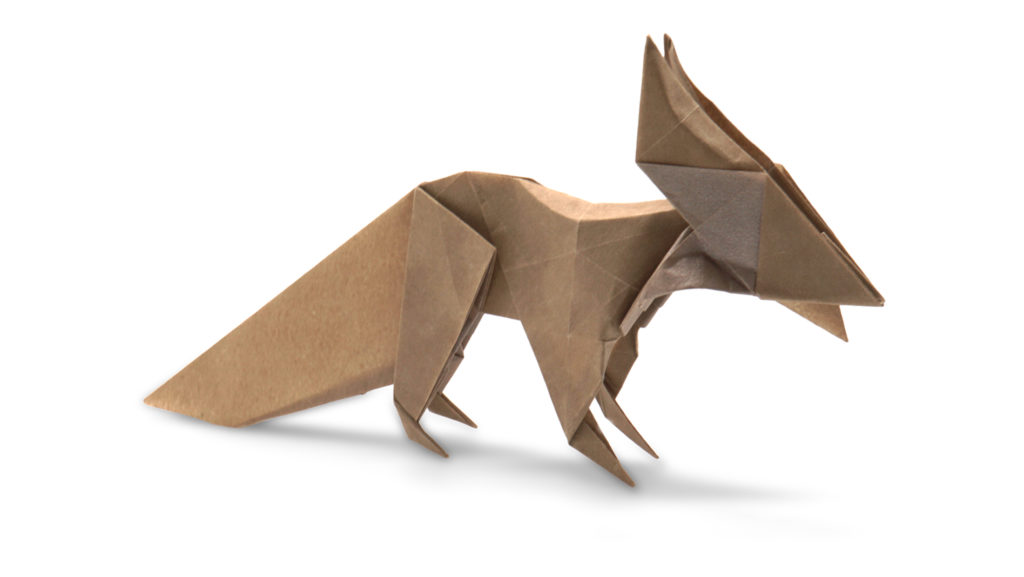
From Chile, Miguel Kaiser demonstrated how to make his black necked swan model. (If you want to fold a simpler model, check out the traditional origami swan.)
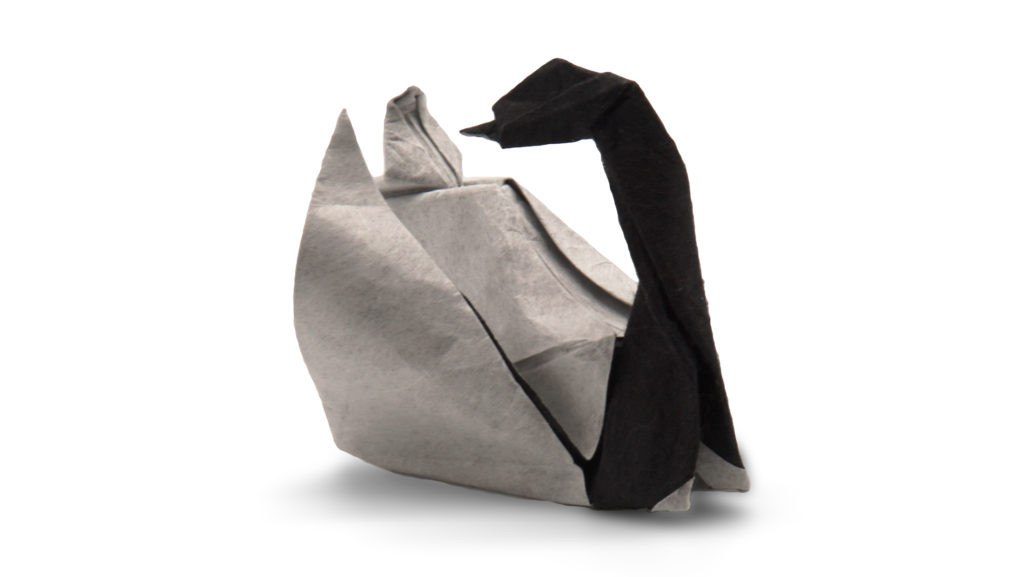
Marc Vigo, from Spain, taught the origami chicken.
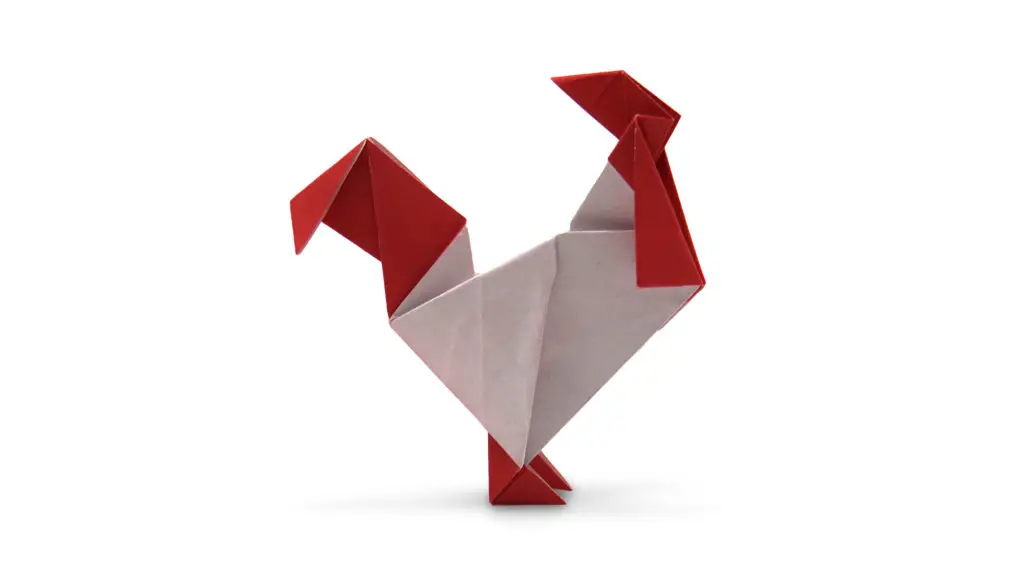
Gen Hagiwara, from Japan, gave a lesson on the 15 degree origami snail. (If you like this model, also check out this origami snail.)
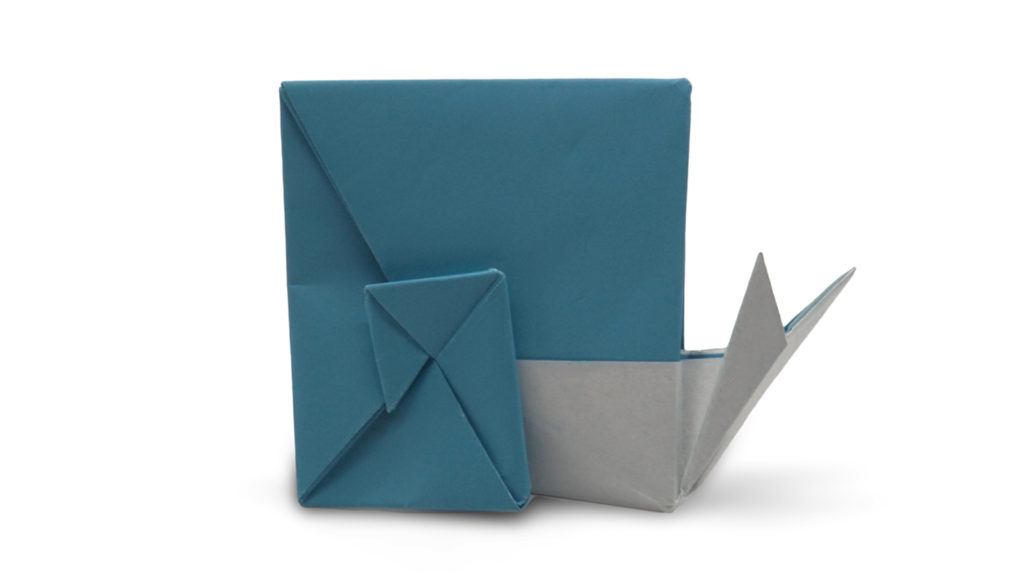
Chen Xiao, from China, taught the 3D origami dragon. (If you like this model, check out this origami baby dragon.)
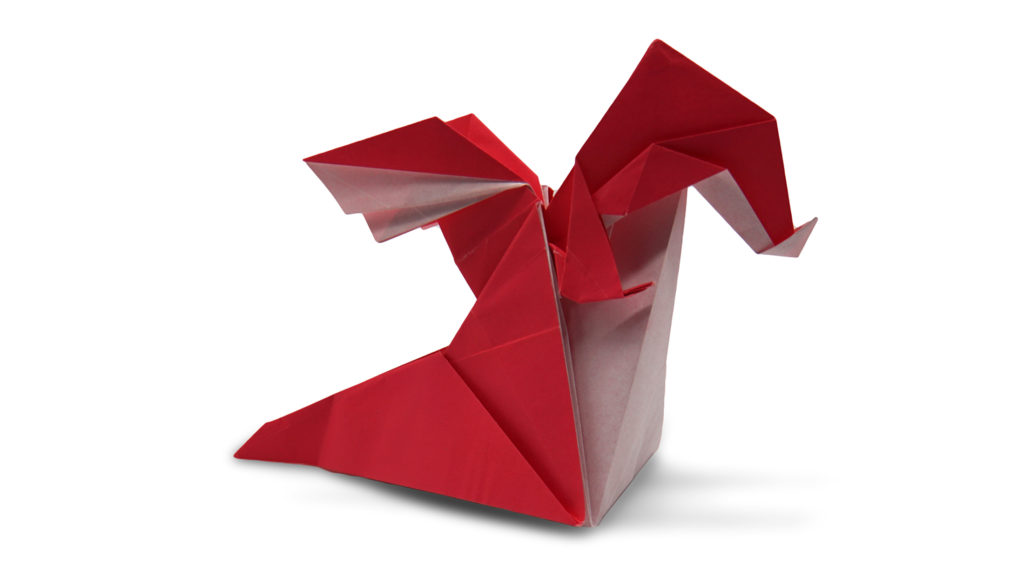
Alizée Glasser, from France, demonstrated her Whirling Linden Seed.
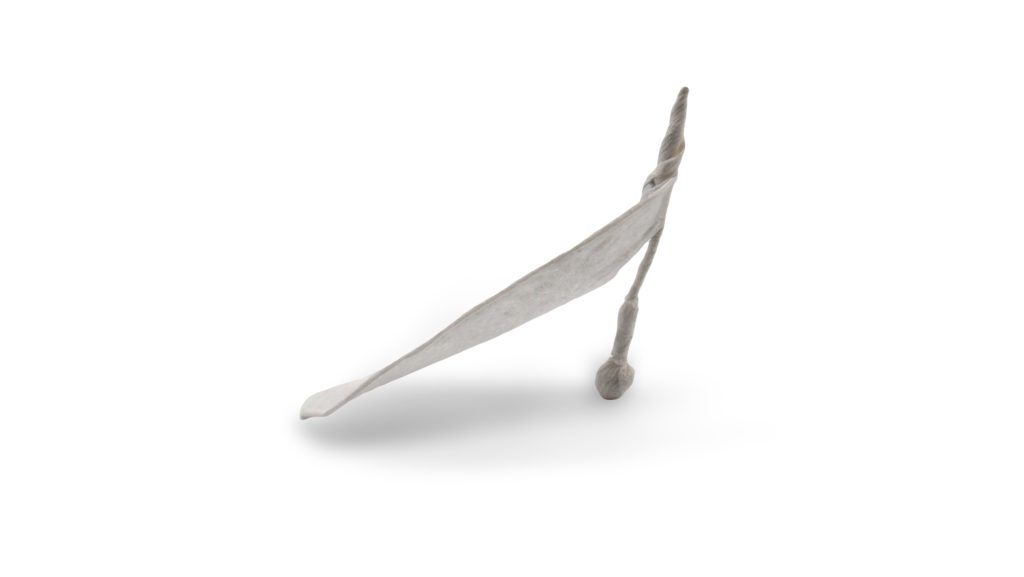
Depending on how long the model took to fold and how much of the hour there was left, there was time for questions at the end. David Brill’s session on his Chain Link Cube was as much about the origin and development of the design and his approach to origami as it was about the model. These Q&A times and general discussions gave a welcome break from the folding. Not that there’s anything wrong with marathon folding sessions, it’s just good to be able to have time to listen, give your fingers a break, grab your next piece of paper or a bite to eat.
In addition to getting to see the designers, it was also nice to connect with other attendees. At the end of every session, all the attendees would hold up their models to the camera. I enjoyed seeing everyone’s interpretations. Additionally, it was fun to connect on social media with the hashtag #origamiworldmarathon and chat about the designs.
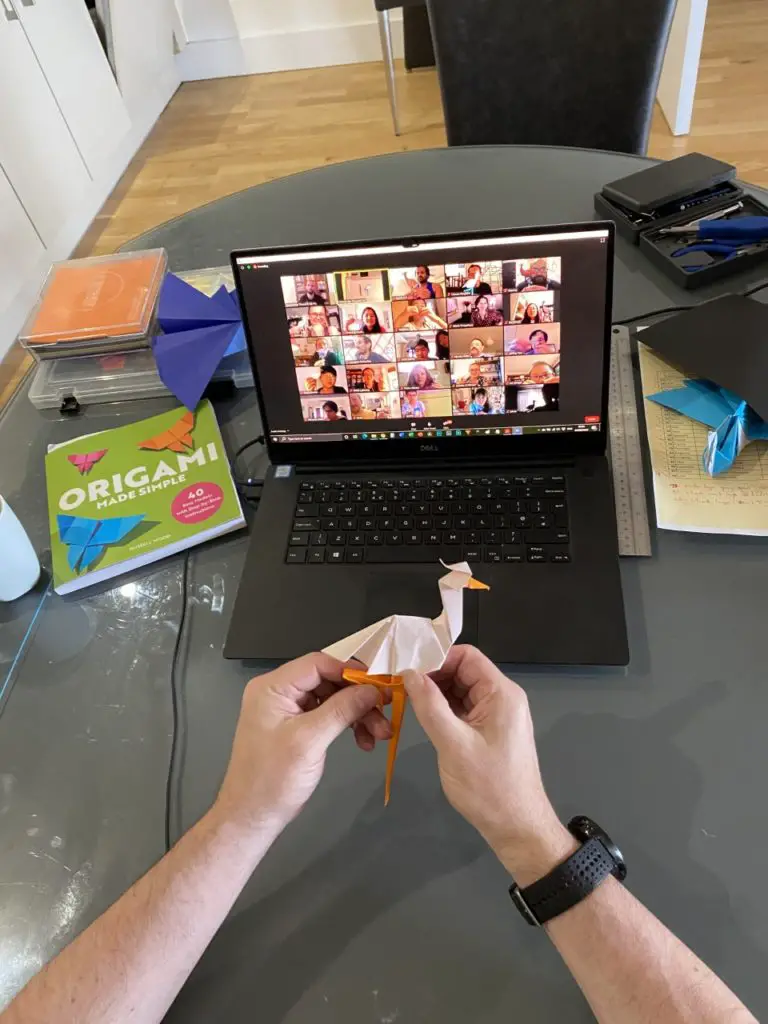
Conclusions
In a word – brilliant! This was a really good event. Classes were well organised, well paced and pitched at the right ability levels. There was the odd technical hitch with cameras but that is only to be expected over 48 sessions and didn’t stop any of the classes running or detract from the enjoyment of the sessions.
Instruction videos for each model were made available immediately after the session finished, which was great for anybody that had not been able to finish the model and wanted to watch it back immediately. I thought these videos were going to be recordings of the classes, but they were actually tutorials by the designer, recorded in advance. I’ve used these videos to make a couple of the models from the Origami Marathon. One or two of them are a bit blocky and low resolution, but they are still good enough to fold from. I’m guessing the quality of the video is dependent on what the designer was using when they recorded it.
I think this was a brilliantly conceived and well run event, bringing people that enjoy origami together virtually from all over the world, both designers and folders, in a very different way than a traditional origami convention. I hope they do another one because this one seems to have been very successful. If they do, I’m going to clear my diary, brew a fresh pot of coffee and try to make as many sessions as I can.
My only suggestion for improvement next year would be to add a third Zoom room – not for another round of folding, but as an informal place to gather, have a chat and talk over experiences so far. An Origami World Marathon Coffee Lounge if you like. It might work it might not. It might mean that some people who weren’t interested in what was on offer for that hour could get together outside the formal arranged classes. It might even result in small groups forming, setting up their own zoom call and teaching themselves something while waiting for the next OWM class to start.
A huge thank you to Nicolas Terry, Ilan Garibi and Guy Loel for organising the first Origami World Marathon, and to their team of moderators: Kathleen Sheridan, Patty Grodner, Guy Binyamin, Michael Zaloziecki, Martin Rohrmann, Ben Goldberger. I’m already looking forward to the next one!
Note: If you like virtual origami events, you might also like to read my review of the BOS VCon and OrigamiUSA’s Foldfest 2021.
Get Involved
I’d love to hear your views on the Origami World Marathon. Did you attend any of the sessions? Which models were your favorites? Feel free to let me know what you think in the comments below, or you find can me on Instagram or Twitter. Check out my Pinterest boards too!
Sign up for my origami newsletter here and get our free Origami eBook.
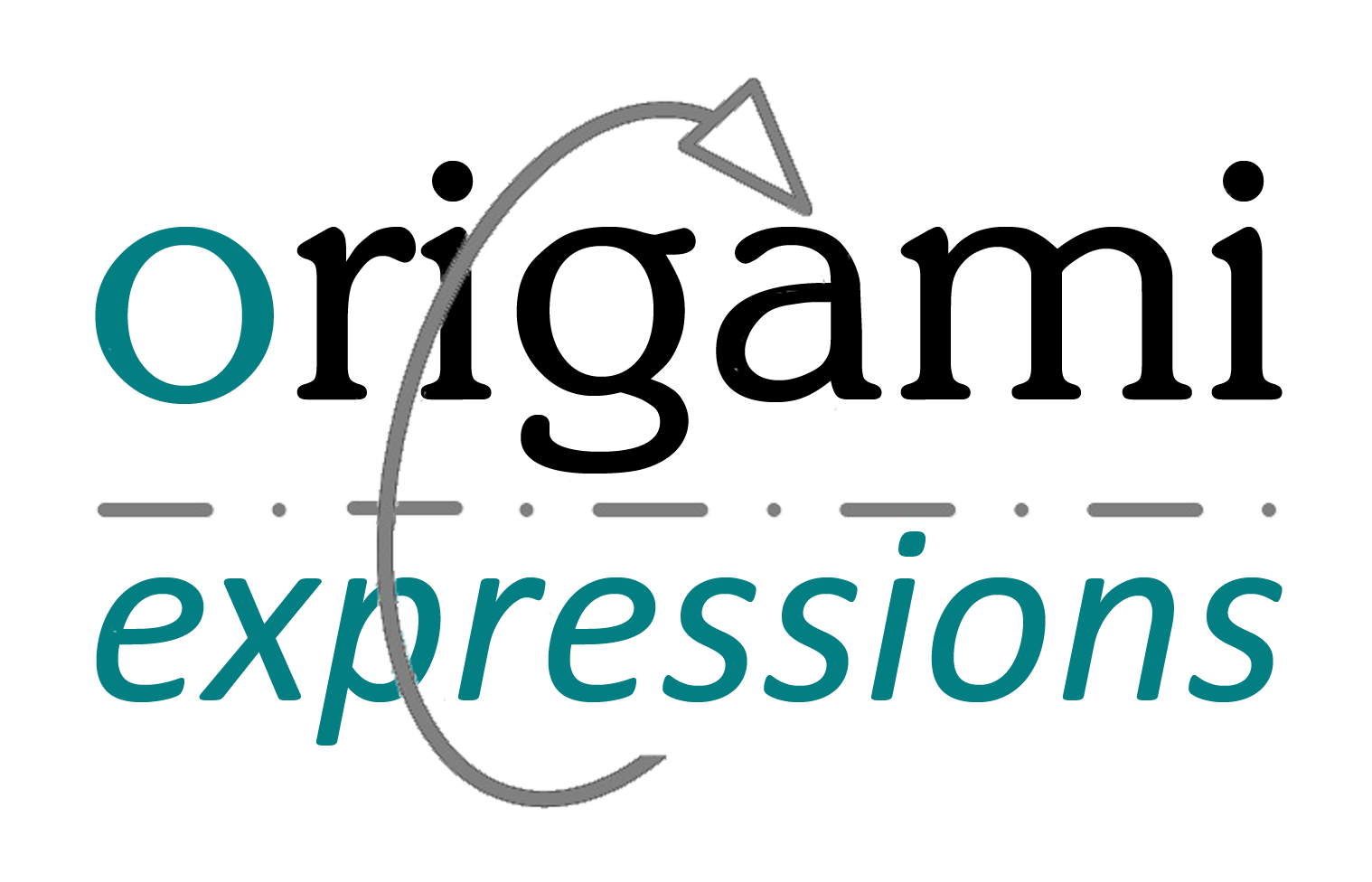
Hey Russell! Really great article! I’m so glad you enjoyed the marathon and were able to fold so many models. Thanks for the feedback, too! We’re already excited for the second WOM
Thanks for reading and the nice comment. I really enjoyed it, looking forward to the next one.
Thank you for this feedback! We for sure will make another marathon, next August! And we are planning to have a third room, or even more, for people to hang out.
Excellent. I am looking forward to it!